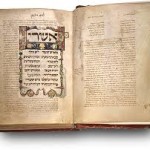Literary Analysis of Psalm 4
Click here to read “Psalm Four – Translation of the Song” On first reading, Psalm 4 seems disjointed, as though several melodies were being sung, one after the other. The one common chord throughout, however, is the constancy of the singer’s faith in God. Verse 2 begins with the singer’s plea to God …
